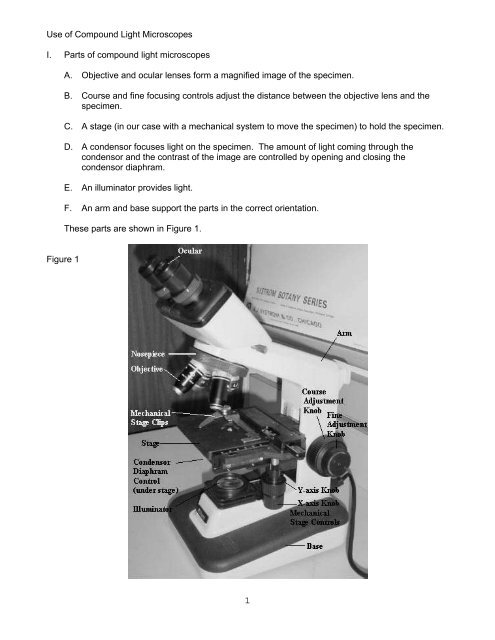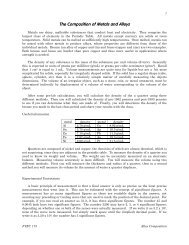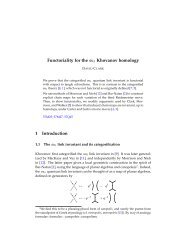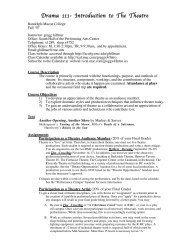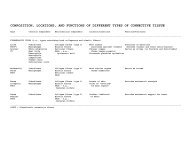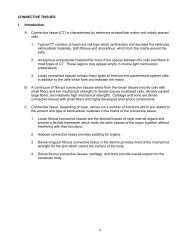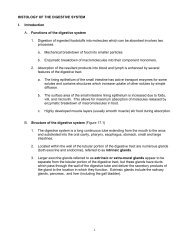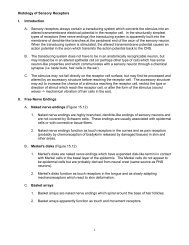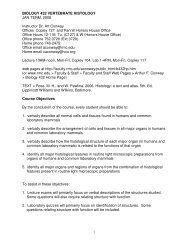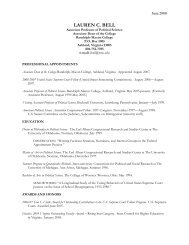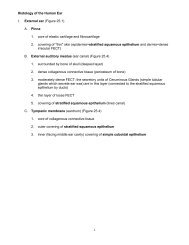Use of Compound Light Microscopes I. Parts of ... - Faculty.rmc.edu
Use of Compound Light Microscopes I. Parts of ... - Faculty.rmc.edu
Use of Compound Light Microscopes I. Parts of ... - Faculty.rmc.edu
Create successful ePaper yourself
Turn your PDF publications into a flip-book with our unique Google optimized e-Paper software.
<strong>Use</strong> <strong>of</strong> <strong>Compound</strong> <strong>Light</strong> <strong>Microscopes</strong>I. <strong>Parts</strong> <strong>of</strong> compound light microscopesA. Objective and ocular lenses form a magnified image <strong>of</strong> the specimen.B. Course and fine focusing controls adjust the distance between the objective lens and thespecimen.C. A stage (in our case with a mechanical system to move the specimen) to hold the specimen.D. A condensor focuses light on the specimen. The amount <strong>of</strong> light coming through thecondensor and the contrast <strong>of</strong> the image are controlled by opening and closing thecondensor diaphram.E. An illuminator provides light.F. An arm and base support the parts in the correct orientation.These parts are shown in Figure 1.Figure 11
D. Changing specimens1. Switch back to the 4x objective.2. Exchange the specimens carefully. A thick specimen may require raising the objectivelens, but routine slides can be exchanged with the 4x objective in focused position.text © 2003 A. F. Conway, pictures courtesy <strong>of</strong> M. Lazarchic4


